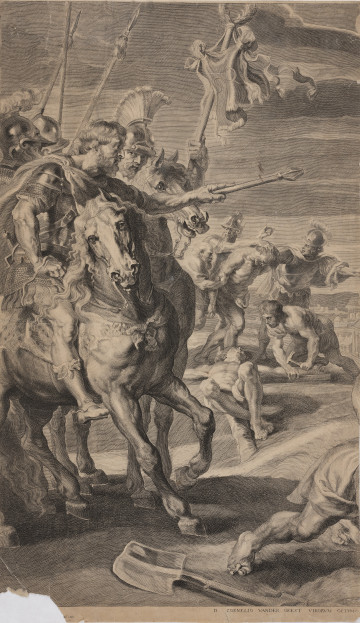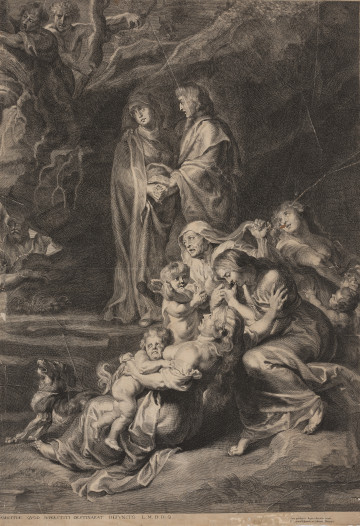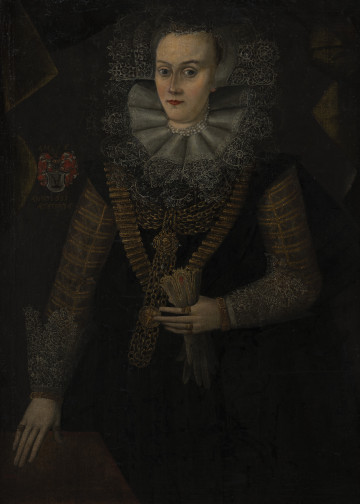
De Kriusoprichting | The Elevation of the Cross
1638
National Museum in Szczecin
Part of the collection: European classics of modernity
Aleksander Lesser created mainly historical paintings as he was a representative of the archaeological current in the Polish painting of the pre-Matejko era. Most often, he undertook the historical themes related to the ground-breaking events for Poland. In the collection of the National Museum in Szczecin there is Lesser's painting depicting a historical scene entitled Habdank, i.e. the Polish nobleman's coat of arms, referred to in the oldest Polish coat of arms preserved to this day, Insignia seu cle nodia Regis et Regni Poloniae, written down by the historian Jan Długosz in 1464-1480. The painting depicts the palace interior with King Henry IV sitting on a throne under a canopy on the left, wearing a red coat, a blue dress and half-armour. On his head he has a crown and a sceptre in his hand. To the left is a knight holding a sword leaning against the floor. On the right is a figure of a young man who has his hand raised with a ring over a basket full of golden objects. Behind him, there are three more knights, and on the far right a squire is depicted holding a shield with the Habdank emblem (an inverted silver letter M on a red field). Lesser illustrated the legend of the coat of arms described by Dlugosz, which says that the name Abdank comes from a thank you from the German emperor to the Polish deputy Skarbimir (from the German phrase habe dank). The German ruler showed him huge chests full of gold to emphasise his wealth. The Polish knight then took off a ring from his finger with the words Go gold to gold. We Poles are more in love with iron and will defend ourselves with iron and threw it into the chest. Henry IV then said the word Habdank, meaning thank you. From this phrase the original name of the coat of arms was changed from Skarbek to Abdank.
Beata Małgorzata Wolska
Author / creator
Dimensions
cały obiekt: height: 70 cm, width: 90 cm
Object type
painting
Creation time / dating
Creation / finding place
Identification number
Location / status

1638
National Museum in Szczecin

1638
National Museum in Szczecin

1631
National Museum in Szczecin
DISCOVER this TOPIC
National Museum in Lublin
DISCOVER this PATH
Educational path